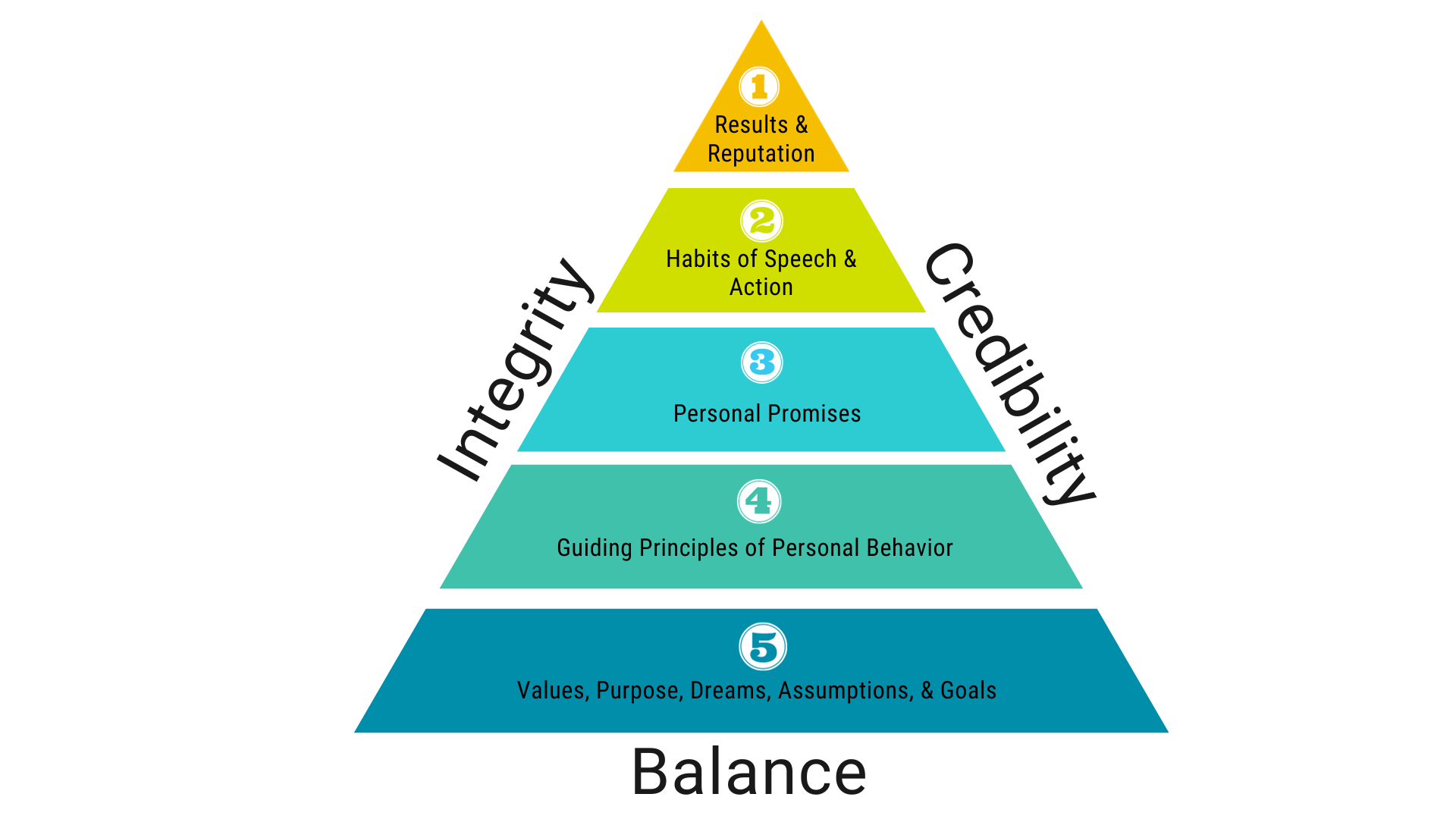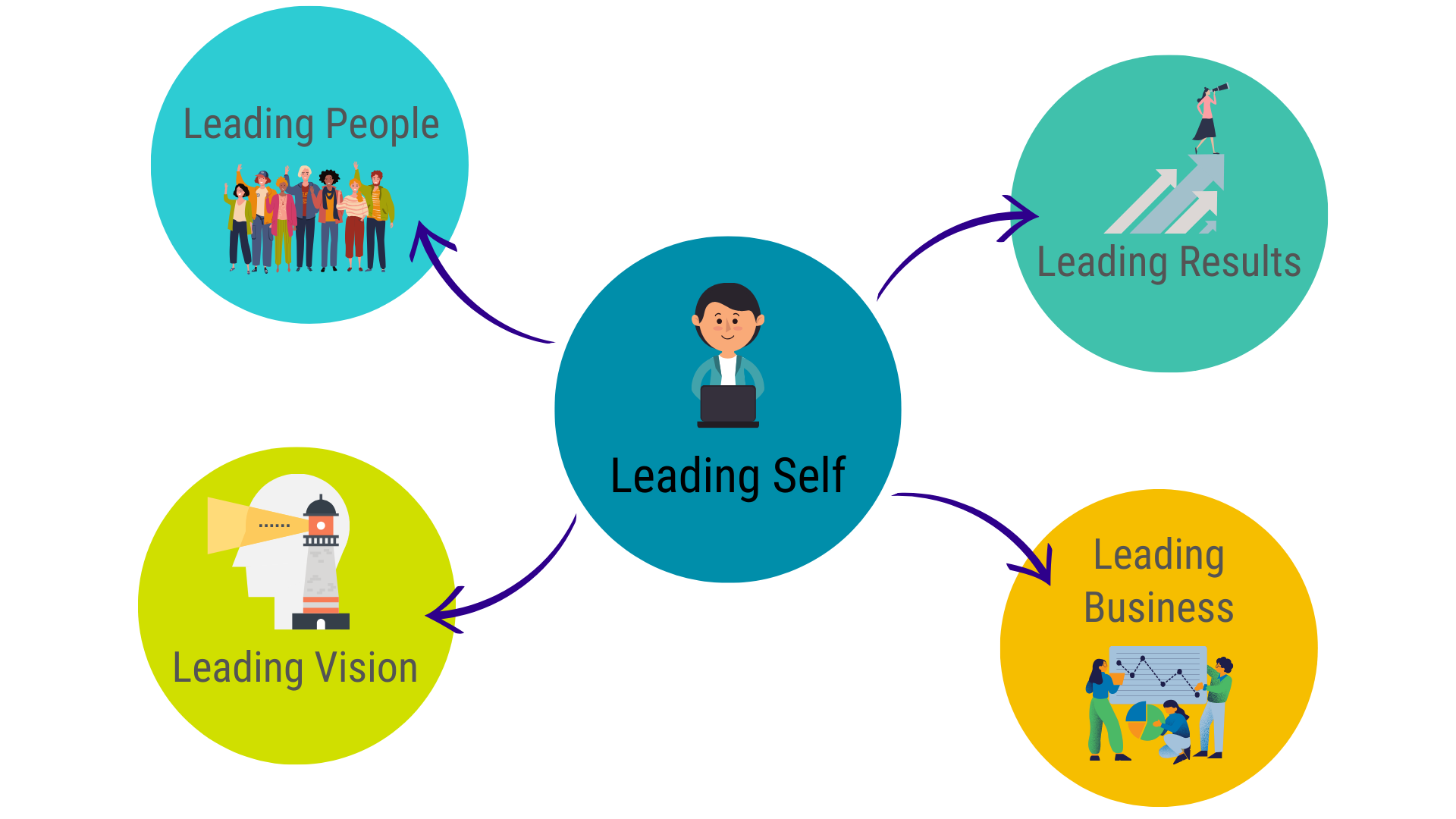This is last article in a three-part series: check our part 1 and part 2.
Achieving the level of awareness characteristic of an authentic leader requires that you understand yourself as this understanding has everything to do with how you approach the challenges and process of leading in ways genuine to your values. This may seem obvious, but it’s not a stretch to say that many leaders know more about their company than they do about themselves as individuals or the priorities of a leader. For example, the first priority of a leader is to build and maintain a strong and healthy culture – one grounded in values that dually drive business success and the flourishing of its members.
The Pyramid of Authentic Leadership
The Personal Pyramid is a model that I have used for more than forty years to help leaders move toward an unvarnished understanding of who they are and how it impacts their assumptions, words, and actions. This is the same framework that defines the characteristics of an authentic leader but with a lot more detail about what a leader has to work on to be seen as authentic by his followers.

As you move from the person you want to be at the base of the pyramid, you progress up through increasingly more specific and visible personal habits until you achieve the results you intend and earn the reputation that you deserve. The term “habits” reflects the fact that excellence is the result of practicing the right things until they become a natural part of your character and leadership.
Focusing Your Leadership
Authentic leaders focus on five broad areas of leading; namely, self, business, results, people, and vision.

The five areas are where you apply your leadership skills by focusing on your intentions, values, and principles. Each of the areas is defined in detail in the following table.
Self-leadership: Being disciplined and consistent, in touch with and able to control one’s emotions, and positively predictable; acting with maturity, performing well under stress, and changing as the conditions of success demand it. It includes enacting a self of honorable character and principled action and acting on the fact that, “No one can make you feel inferior without your permission.” (Eleanor Roosevelt)
Business-leadership: Understanding how your company makes money and earns the loyalty of its most valued customers. It is creating an effective business model, identifying the appropriate strategic imperatives, focusing on the proven keys to success, and insisting on standards that ensure consistent execution of the intended guest experience and a strong consumer brand and understanding that, “It is not the employer who pays wages; he only handles the money. It is the product that pays wages.” (Henry Ford)
Results-leadership: Distinguishing symptoms from their underlying problems, understanding and ensuring the experiences that earn stakeholder loyalty, and acting in a balanced way on the natural give and take among each stakeholder’s needs and wants. It’s knowing that, “If you are wondering ‘how we got here,’ you’re in the wrong job.” (Tom DeCotiis)
Vision-leadership: Creating/teaching an inspiring vision of the future and communicating it to followers, developing a culture of success, acting to protect and strengthen the culture regardless of the immediate consequences, and making today’s decisions with an eye on the future. It is acting on the fact that, “Where there is no vision, the people perish.” (Proverbs 29:18)

People-leadership: Understanding the ebb and flow of emotion in people, accurately reading the emotions of others and being able to harness them for doing good things, and building rapport with others. Earning the trust of followers and molding them into a high-performance team, holding them accountable, and creating buy-in to the vision and a strong sense of belonging and significance. It is knowing that, “Leaders are dealers in hope.” (Napoleon Bonaparte)
While I don’t know whether there is an order to how skills are developed in each of the areas, experience tells me that they are developed more or less simultaneously, with one being more intensely developed at one point in time and another being more developed at another. Often, what is worked on has a lot to do with necessity and the brick walls you run into. Having said that, leading the self is the key growth as it is the upper limit to development of the other four areas of leading. That’s because you cannot be more to your followers than you can be to yourself and expect to be seen as having integrity, credibility, and balance.
“The authentic leader does not have all of the ideas or answers, but develops a culture where good ideas and answers are common and valued.”
Raising the Bar on You
At the end of the day, all good ideas degenerate to hard work, especially when they are worth pursuing. That is especially true of leadership ideas because they affect so many people’s lives. The authentic leader does not have all of the ideas or answers but develops a culture where good ideas and answers are common, and followers feel valued for airing them.
Your individual definition of the leader you intend to be is the starting point of growth. What has been offered here are many of the things you have to think about and do on your way to being the leader you want to be. Whether you choose to make this journey or not, the choice is not about growth but about pain. You either choose the pain of discipline and change or the pain of comfort and regret.
Now that you’ve arrived at your destination – start adding to your toolbox, starting with cultivating active stakeholder engagement.




